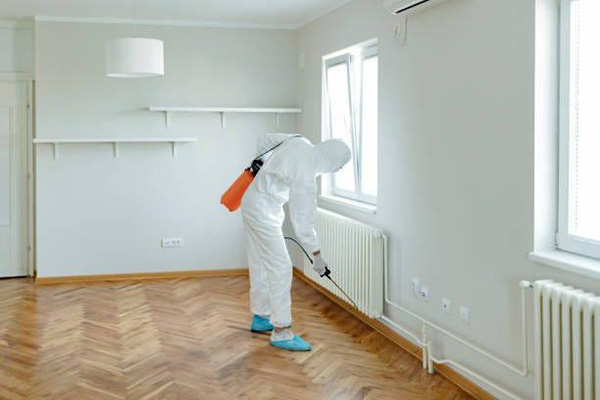Protect Your Belongings: Storing Items During Renovation Projects
Renovating a home brings a whirlwind of activity and decisions. Amidst choosing paint colors and floor plans, homeowners often overlook one crucial aspect: safeguarding their belongings. The chaos of construction can threaten the safety of treasured items, from heirlooms to everyday essentials. This oversight leads to unnecessary stress and potential loss. However, with thoughtful planning and the right strategies, protecting possessions during a remodel is possible and can be seamlessly integrated into the project’s workflow.

This guide offers practical storage solutions to ease worries, even for small-scale projects like kitchen remodeling. Discover effective methods to safeguard your valuables and enjoy peace of mind as you enhance your living space.
Understanding The Need For Proper Storage
Embarking on a home improvement project often focuses on aesthetics and structural changes, while the safety of personal belongings may not immediately come to mind. Yet, construction work’s dust, debris, and bustling activity necessitate protective measures. Without these, items within the home risk damage from scratches, breaks, or worse.
Cluttered spaces pose a risk to these items and hinder the renovation’s efficiency. A clear workspace is essential for safety and operational effectiveness. Overlooked items during this activity can result in accidents, affecting both personnel and property.
Storage units can cater to different storage needs, offering short or long-term solutions for homeowners undergoing renovations. A separate storage space helps keep the work area clutter-free, providing more room for contractors and renovators to move around safely. This not only improves overall project efficiency but also minimizes the risk of accidents and damage to belongings.

Assessing What Needs To Be Stored
Homeowners undertaking home improvement need to assess and decide which items require safekeeping. They should categorize their belongings, considering factors like the risk of damage, size, and frequency of use.
Creating an inventory is a practical approach. This list assists homeowners in tracking which items have been moved and aids in reorganizing them once the remodel is complete. By marking each item or box with a simple description, the process becomes more orderly, making it easier to find specific items when necessary.
For everyday frequently used items, consider a separate storage solution. These should be easily accessible to avoid disrupting daily routines. Off-site storage might suit more extensive and less frequently used items. The key is to strike a balance, ensuring that essential items are within reach while protecting those more vulnerable or less frequently used.
Identifying Suitable Storage Solutions
Finding the correct storage solution is crucial for preserving belongings during a renovation. Homeowners have several options, each tailored to different requirements and circumstances.
- On-site storage – This option is ideal for items frequently used or too large to move quickly. Large appliances, such as refrigerators or dining tables, can be stored in an unused room or garage. Cover them with sturdy plastic sheeting or blankets to protect against dust and prevent damage. Robust, sealable containers work well for smaller items like kitchenware or documents. These can be tucked away in less affected areas, like under the stairs or closets, ensuring they’re out of the way yet accessible. Keeping these storage spots secure and safe from construction hazards is essential.
- Off-site storage – These units present an excellent solution for homes with limited space or items not needed during the home improvement. They’re available in various sizes, offer a secure and often climate-controlled environment, and are perfect for sensitive items like electronics, artwork, or essential documents.
- Specialized storage solutions – For extremely valuable or fragile items, specialized storage solutions are advisable. These options often feature advanced security measures and tailored environments to ensure optimal protection. This approach is critical for things like fine art, antiques, or sensitive electronics, which need more than physical space for proper preservation.
The selection of a storage method should match the homeowner’s needs, considering factors such as the remodel’s duration, access requirements, and the nature of the items. A thoughtful choice ensures that each item is stored appropriately, balancing convenience and protection.
Packing And Organizing For Storage
Adequate packing and organizing are crucial to protecting belongings during a renovation. It’s not just about putting things away; it’s about doing so in a manner that ensures their safety and easy retrieval.
Packing Tips:
- Use suitable materials – Select sturdy boxes, bubble wrap, and packing paper for different items. Fragile items require extra cushioning, while electronics may need anti-static materials.
- Label clearly – Label every box with its contents and the room it belongs in, simplifying the unpacking process and making it easier to locate things.
- Pack by room – Packing room by room keeps items organized and reduces confusion during unpacking.
Organizing for Storage:
- Create an inventory – Keeping a list of what’s in each box can save time and frustration. This document can also serve as a record for insurance purposes.
- Prioritize accessibility – Place items you might need near the front of the storage space during the home improvement process. Less frequently used items can go towards the back.
- Use space wisely – Stack boxes carefully, considering the weight and fragility of their contents. Utilize shelving units if available to maximize space and keep items off the floor, away from potential water damage.
By packing and organizing effectively, homeowners can significantly reduce the risk of damage, making the transition back to normalcy smoother and more efficient after the remodel.
Safety And Security Considerations
When storing items during a renovation, ensuring the physical safety of belongings is just one aspect; it’s also crucial to consider the security of the storage space.
- Security measure – If using off-site storage, choose facilities with robust security features like surveillance cameras, gated access, and individual locks. For on-site storage, ensure that areas are locked and inaccessible to unauthorized personnel.
- Insurance coverage – Verify that your homeowner’s insurance policy covers items during home improvement and storage. If not, consider additional insurance to protect against theft, damage, or loss.
Homeowners gain reassurance by prioritizing these safety and security measures, knowing their belongings are well-protected throughout the remodeling process.
Final Thoughts
As your home transforms, remember that the well-being of your belongings is an integral part of the process. Taking the steps outlined in this guide will protect your possessions and contribute to a smoother renovation journey. Embrace this opportunity to reorganize and reassess what matters most in your living space. Feel inspired to confidently embark on your home improvement journey, knowing that your cherished items are secure and well cared for. Each step towards a renewed home is a step towards a refreshed life.



